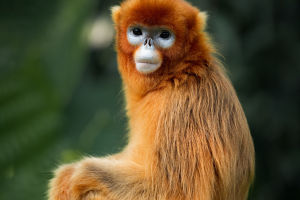The White Egret, also known as the Great Egret, is a magnificent bird that is widely distributed throughout the world.
It is one of the largest of the heron family, and it is known for its long, graceful neck and striking white plumage. The scientific name for the White Egret is Ardea alba, and it belongs to the family Ardeidae.
Appearance and Characteristics
The White Egret is a tall bird, with a height of up to 1 meter and a wingspan of up to 1.5 meters. Its body is slender, and it has a long, curved neck that it uses to search for prey in shallow waters. The bird's beak is long and pointed, which is ideal for spearing fish and other small aquatic creatures. Its legs are long and slender, and they are equipped with sharp talons that are used to grasp onto prey.
The White Egret is known for its striking white plumage, which is offset by its black legs and yellow beak. During breeding season, the bird's beak turns a bright green color, and its legs turn a deep red. The bird's feathers are made up of fine, hair-like structures that give it a soft, fluffy appearance.
Habitat and Range
The White Egret is found in a variety of wetland habitats, including marshes, swamps, and shallow ponds. The bird is native to North and South America, Europe, Africa, Asia, and Australia, and it can be found in both freshwater and saltwater environments.
Behavior and Diet
The White Egret is a solitary bird that spends most of its time searching for food. The bird feeds primarily on fish, but it will also eat amphibians, reptiles, and small mammals. The bird's hunting technique involves standing still in shallow water, waiting for prey to swim by, and then using its long, sharp beak to spear the prey. The bird may also use its feet to stir up the water and flush out hidden prey.
During the breeding season, the White Egret becomes more social and may form small colonies. The bird builds its nest in tall trees or on the ground, using sticks and twigs. The female will lay between 2 and 6 eggs, which both parents will take turns incubating. After the eggs hatch, the parents will continue to care for the young birds, bringing them food and protecting them from predators.
Conservation Status
The White Egret is classified as a species of least concern by the International Union for Conservation of Nature (IUCN). However, the bird population has declined in some areas due to habitat loss, pollution, and hunting. The bird's feathers were once highly prized for use in the fashion industry, which led to widespread hunting and poaching. Today, the bird is protected by law, and its population is slowly recovering.
The White Egret is a magnificent bird that is both beautiful and powerful. Its striking white plumage and graceful movements make it a favorite among birdwatchers and nature enthusiasts. The bird's hunting techniques are fascinating to observe, and its dedication to its young is admirable.
While the White Egret's population has declined in some areas, efforts to protect the bird and its habitat are helping to ensure that it remains a part of our natural world for generations to come.


